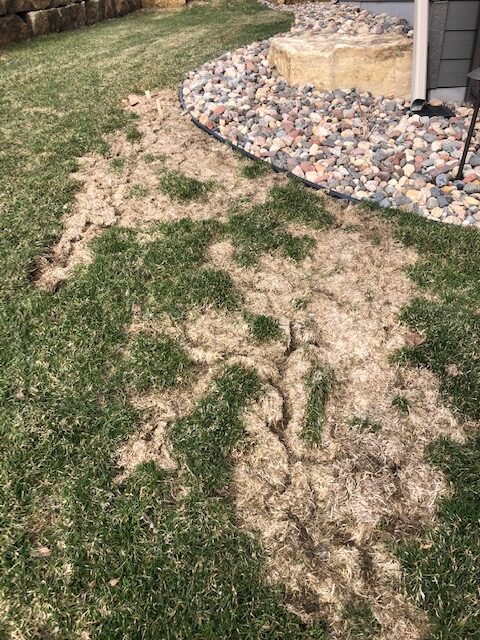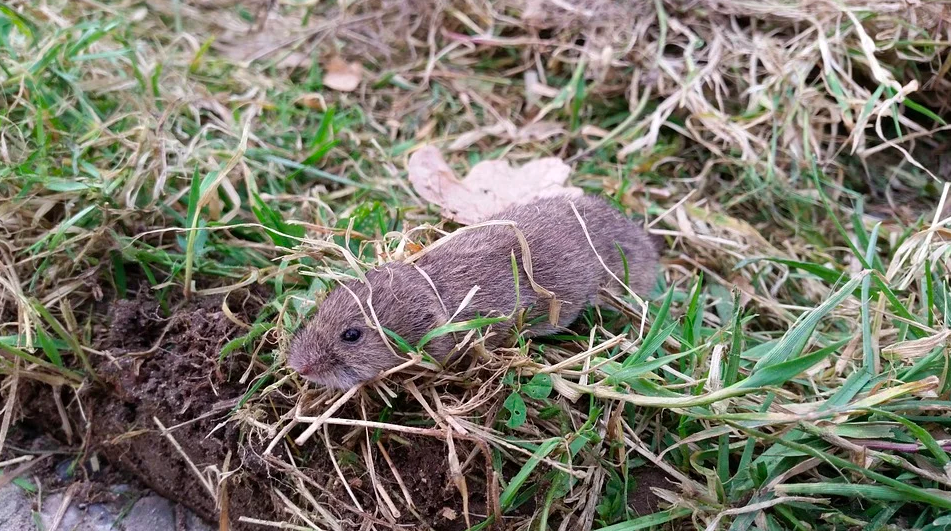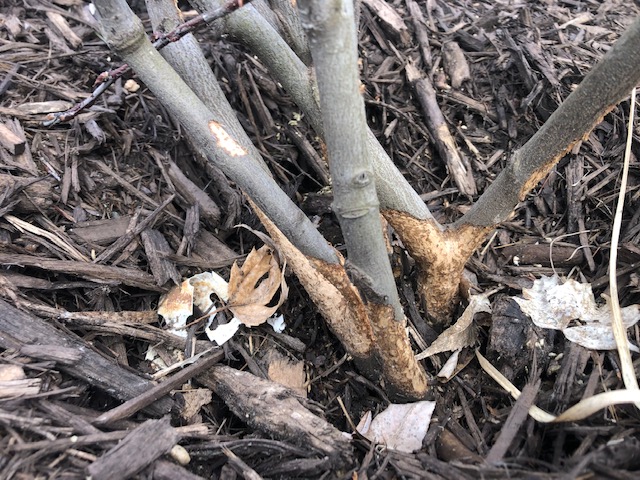It may sound counter-intuitive, but fall is actually the best time to address the dead grass runs that voles leave in homeowners lawns each spring!
Vole Behavior
 Voles are a species that like overhead cover to keep them protected from predators. In the warmer summer and fall months, they find harborage in dense shrubs, tall grasses, retaining walls, and other places that provide cover. This keeps them from spending time in your lawn over the warmer months, and leaves them mostly out of both sight and mind. During this time, however, they will feed on newly planted sod, garden plants or flowers, tree bark, or the root systems of bulbs.
Voles are a species that like overhead cover to keep them protected from predators. In the warmer summer and fall months, they find harborage in dense shrubs, tall grasses, retaining walls, and other places that provide cover. This keeps them from spending time in your lawn over the warmer months, and leaves them mostly out of both sight and mind. During this time, however, they will feed on newly planted sod, garden plants or flowers, tree bark, or the root systems of bulbs.
As winter eventually comes, this brings snow, and snow brings cover – exactly what voles thrive on. Suddenly voles are free to roam through your yard, seeking food by traveling along the surface of the ground and tunneling right through the snow. They will continue to eat the root systems of bulbs, the bark off the bottom of trees, and even your grass.
This activity creates an intricate web of dead grass runs in your lawn, forming a highway that wanders around, crossing itself and circling back. By the time spring arrives, the snow melts away to display the aftermath. The damage has been done, and the repair work must begin. The voles, meanwhile, have returned to their “summer homes.”
How To Get Rid Of Voles
 “Getting rid of voles” outright is unfortunately not possible. They are the most prolific reproducing mammal in the United States. Their explosive reproduction rate would allow one pregnant vole to result in the birth of anywhere from 25,000 to 130,000 additional juveniles over the course of a year in Minnesota’s climate. Once you take into account mortality/emigration, actual local survivors numbering closer to 1,800. Luckily, they neither live long nor range far.
“Getting rid of voles” outright is unfortunately not possible. They are the most prolific reproducing mammal in the United States. Their explosive reproduction rate would allow one pregnant vole to result in the birth of anywhere from 25,000 to 130,000 additional juveniles over the course of a year in Minnesota’s climate. Once you take into account mortality/emigration, actual local survivors numbering closer to 1,800. Luckily, they neither live long nor range far.
The solution to a vole problem is to address it through vole management before an actual issue arises. Here at Abra Kadabra, we offer both trapping and baiting solutions for voles. Trapping programs are most appropriate in the warm months when homeowners are experiencing issues with the voles in their gardens, under their mowers, or eating fresh sod. Trapping can be a good solution for an immediate problem, however, there is no lasting effect over time. Our go-to solution for most vole problems is our Winter Vole Management Program, which targets preventing the winter lawn destruction through seasonal baiting.
Seasonal Vole Baiting
 Bait stations are strategically placed shortly before first snow, and are refilled throughout the course of the winter. We service and replace the stations frequently at first because the existing population eats away at it fairly quickly. Subsequent visits show lighter activity, showing us that the control is effective and allowing longer spans between service calls.
Bait stations are strategically placed shortly before first snow, and are refilled throughout the course of the winter. We service and replace the stations frequently at first because the existing population eats away at it fairly quickly. Subsequent visits show lighter activity, showing us that the control is effective and allowing longer spans between service calls.
By performing a regular baiting program during the winter season, this prevents the explosive reproduction and multiplication of the local population. When the snow melts and the overhead cover on your lawn is no longer present, bait stations are removed until fall.
Vole Removal & Baiting Services
Have you experienced spring lawn damage at your home due to voles in the past and concerned about the upcoming winter season? If you’re located in the greater Twin Cities, MN metro area, contact Abra Kadabra Environmental Services today to begin addressing your vole problems. Our experienced vole removal and baiting technicians will walk you through our process of preventing spring vole damage and begin the vole baiting process.







